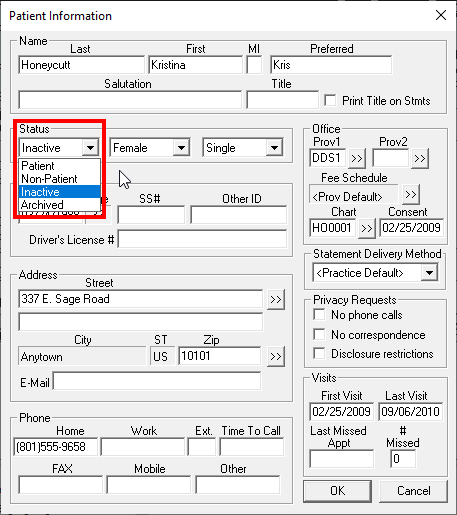Lately I’ve seen some questions about inactivating and archiving patients. While there are many opinions on this topic and offices will vary in their policy on this matter, I thought I would share some of my thoughts.
If you’ve attempted to contact a patient who is due for recall procedures, has outstanding treatment, hasn’t been seen for eighteen months, and they haven’t responded after multiple attempts, I would suggest sending them a letter and changing their status to Inactive in the Family File.

This doesn’t mean the patient can’t return to your office; however, since they haven’t been seen in the last eighteen months, they aren’t considered an active patient in your office. When your office decides to inactivate a patient, I would recommend changing the status of any outstanding treatment to Rejected so their outstanding treatment doesn’t continue to appear on outstanding treatment plan reports and in the Treatment Manager. I would also suggest clearing the patient’s Continuing Care so that they don’t continue to show up on continuing care reports.
If you schedule an appointment for a patient with an inactive status, Dentrix will give you a pop-up message to inform you of the patient status. I really like this because you can use this pop-up as a reminder for you to verify or update the patient’s information (address, phone number, and so forth) in Dentrix. When you schedule their appointment, you can also let the patient know that they will need to arrive early to update their health history.
When it comes to archiving a patient, my first recommendation is that you archive deceased patients. One reason for doing so is that it prevents the deceased patient’s information from inadvertently being seen. For example, if your office uses Route Slips, all family information is displayed on the Route Slip. You may not want a deceased family member’s information to appear on the Route Slip and upset the family.
I’ve seen many opinions on the topic of inactivating and archiving patients, so I wanted to share some ideas and insight.
For additional information, read the following:
Written by Charlotte Skaggs, Certified Dentrix Trainer




